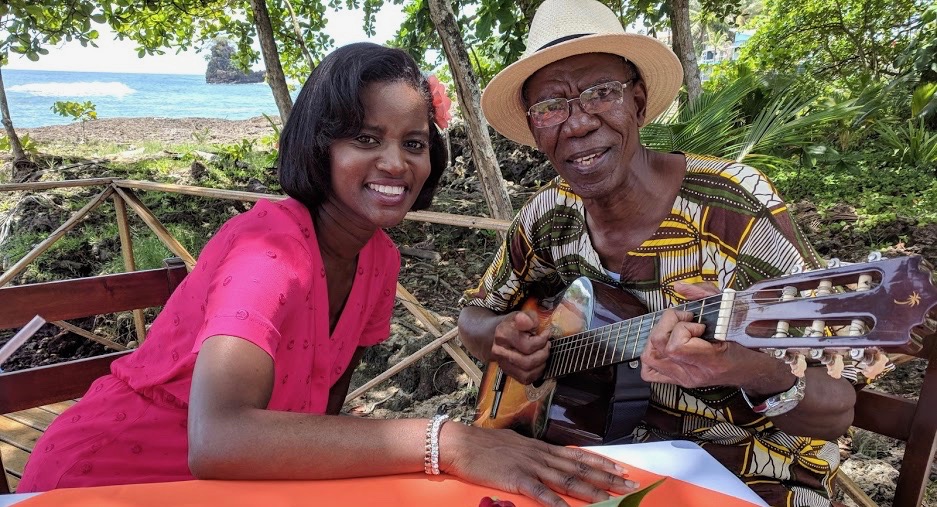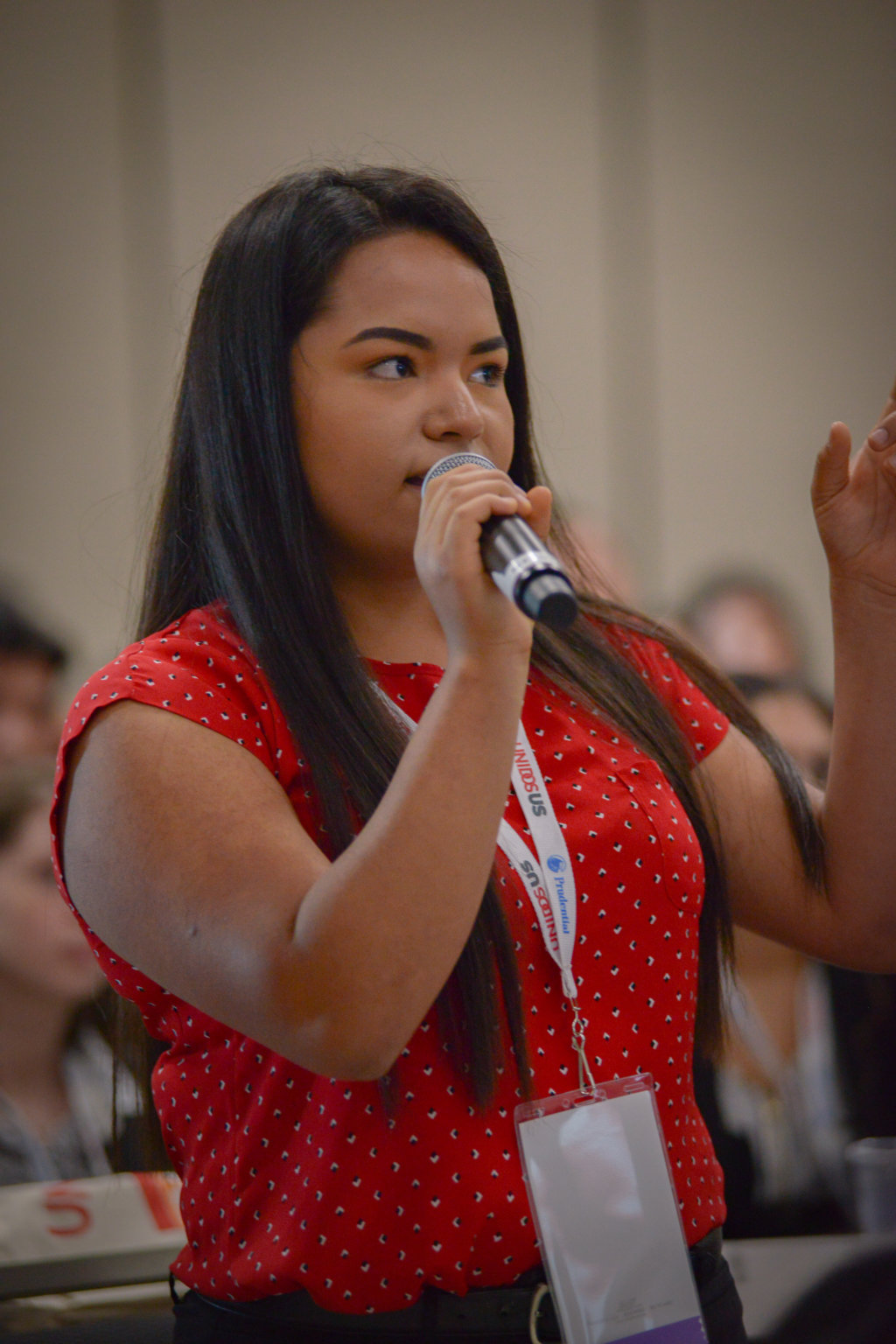A New PBS Documentary Series Offers Diverse History Lessons on People of African Descent in Latin America
People who love other cultures are often seen as people who like things that are “different” to their own upbringing. And while some of that may be true, for Black media professional Kim Haas, who grew up in a Black, non-Latino household in Philadelphia, one of the most exciting parts of learning Spanish and getting to know Latin American, Caribbean, and Latinx culture has been discovering the commonalties—a love of music, arts, and language, not to mention a pride in hard work and family. These are the themes she’ll be exploring in new PBS documentary series called Afro-Latino Travels with Kim Haas. The two-part series premiere began airing across the United States for Hispanic Heritage Month in September, and it will now air in Miami’s WPBT on October 24th and 31st at 12:30 pm. Other PBS stations across the country will air those episodes through November, but due to complications with producing the series during the pandemic, the show will then take a hiatus until sometime in 2021.
The premiere series uses history lessons on Costa Rica’s Black community to help audiences reflect on Black and Brown solidarity here in the United States. ProgressReport.co caught up with Haas over the phone this fall to discuss these episodes and what lessons educators and parents could pull from them as students grapple with heightened racial tensions in America.
Q: What got you interested in studying other cultures and languages, and what, in particular, interested you about the Afro-Latino experience?
Keep up with the latest from UnidosUS
Sign up for the weekly UnidosUS Action Network newsletter delivered every Thursday.
A: It started with my grandmother who took me to Acapulco when I was eight years old. I remember someone taught me to count in Spanish from one to 20 in the hotel lobby where we were staying, and from that day on, I can’t remember when I wasn’t traveling, practicing Spanish, studying abroad, and just meeting other people and cultures.
During my junior year of college, I studied abroad in Seville, Spain, and I lived with a really lovely family. Before I left, I wasn’t sure how it was going to be, how I might be treated or perceived as an African American, but they were just very loving to me, and I felt like I was part of their family.
I went on to major in Spanish, and I watched a lot of Spanish-language television in the States to practice it. I also started learning more about colonization, the Middle Passage, and the African Diaspora. I had friends in Philadelphia who were Afro-Puerto Rican, Afro-Venezuelan, Afro-Dominican, and while traveling, I was saying “wait a minute, Black people have been in Latin America for centuries, I’m meeting them, and yet I’m watching Spanish-language television and I’m not seeing anybody who looks like me. Where in the media are these incredible artists, historians, and chefs of African descent? And when I did see Latinos of African descent, the images tended to be very negative stereotypes.
Q: Tell us more about your media company, what do you do and how did that take you into the realm of documentary production?
A: We’re a community outreach firm focused on public engagement. We work a lot for state and municipal projects in New York, and serve as a liaison between companies or government agencies and the community getting the community feedback, holding community meetings, and discussions, and we do it in different languages. And then we are also doing this video travel series.
Q: So COVID has temporarily halted production of the larger Afro-Latino Travels with Kim Haasproject, but clearly PBS felt there was value in airing the two-part premiere in 2020. Why was it important to go ahead and air those two episodes on Costa Rica in 2020?
A: As with the United States, each country in Latin America and the Caribbean has a mix of ancestry that includes people who are indigenous and from other parts of the globe such as Europe, Asia, and Africa, and they came under many different circumstances. Some were enslaved, others came looking for jobs often as migrant workers building out these countries’ infrastructure.
In the case of Costa Rica, much of the Black population are descendants of a large wave of Jamaican immigrants who came in the early 1900s to build out the country’s railroad from Limón on the Caribbean coast west to San Jose. Can you imagine what it means to build a railroad? This is a hundred and some years ago, you’re in the middle of the Costa Rican jungle, you don’t have a cell phone, you can’t just make a call if you hurt yourself. This is 100 and some years ago. It’s not a developed nation. They’re building in the midst of jungle. I can only imagine there were all kinds of insects and animals making conditions very challenging to construct a railroad. I don’t know what kind of medical treatment was available, but it was probably slim if any, and Black lives weren’t valued. I’m trying to help people put themselves in that situation.
That infrastructure is how stuff moved in Costa Rica and to other countries. That railroad was integral to the development of the country, the movement of goods and products, everything, and it cost a lot of people their lives. In fact, they quit counting after the first 5,000 deaths. We owe them a debt of gratitude.
Q: That’s incredible, and to think that infrastructure led Costa Rica to become one of the most prosperous and peaceful countries in the region. And yet, very few people know this story, even people within Costa Rica. Tell us more about how the lives of Black Costa Ricans have changed and how they’re finally starting to get the recognition they deserve both in that early history and today.
A: Most of Costa Rica’s Black population settled along Costa Rica’s Caribbean coastline. In addition to working on the railroad, many worked in agriculture in cacao and banana production. Today, many of them own the land.
One of the segments features Daniel South who has a beautiful cacao farm and turns the product into chocolate. He wants to be the best cacao farmer in the country. Most of the people we met spoke English because their families maintained it, but they also spoke Spanish. But they are as Costa Rican as everyone else, and today, there’s increasing awareness of their contributions to the arts, sports, science and medicine, as well as politics.
For example,in 2018, Costa Rica elected its first Afro-Costa Rican vice president—Epsy Campbell Barr. This is huge because she’s the first person of African descent in Latin America to be vice president. The significance has been tremendous. She’s a woman and a staunch supporter of rights for people of African descent. For her to be a vice president in a relatively small country with a relatively small African descendent population is extremely significant and hopefully we will see more of this.
We weren’t able to interview her because of scheduling conflicts, but we were able to interview her sisters Doris, a dancer and Sasha Campbell Barr, a singer.. They were great, and they actually work in the arts, so they talked in the interview about how their father always said, “You can do whatever you want, but you always have to have some hand in the arts.” He actually encouraged all of his seven children to be active in the arts. We put one of Sasha’s Spanish songs in the episode with subtitles. The lyrics speak to the resilience of Afro-Costa Ricans, of Afro-Latinos, and people of African descent.

Q: The arts will a recurring and important theme throughout your entire series. Why is that so integral to uplifting Black identity in the Americas?
A: I’m someone who’s just a lover of the arts, that’s what I’m drawn to. At the same time, I don’t want to minimize the importance of the arts because often they can be a way of getting out a message, like we saw during the Civil Rights Movement in the United States. Look at how so many of the songs by Sam Cooke and Aretha Franklin. So many of the songs that people know or are familiar with are about mobilizing people in a social movement.You know, sometimes we say, “oh, it’s just a song,” but a lot can happen around a song. The arts have a way of connecting people where maybe you wouldn’t be able to make that connection another way.
Q: So, what’s your favorite segment in this two-part series? Do you have one?
A: I truly enjoyed meeting each person we interviewed, and I think people get different things out of different segments. Maybe you’re attracted to a segment because of a topic you’re interested in or maybe you’re curious about a particular person because of how they carried themselves. I know I’m really proud of the sense of family. I think we often talk about Latin America as offering a great sense of friends and family, and I hope that this comes through when people watch the series. It was important to me that people see Black families.
Q: That’s really cool, and also a reminder that we started this conversation talking about how your own grandmother instilled in you this love of learning and of learning about the commonalities and differences of other cultures and languages. You mentioned the vice president’s family. What other Black Costa Rican family story stands out?
A: You see this gymnast Tarik Soto who was on his way to the Olympics when we interviewed him two years ago. He ended up suffering an injury and couldn’t go but he was one of Costa Rica’s best. So, in the episode, I go home with him to his house to meet his parents. His mother was one of the first Black physicians in the country, and his father was an agronomist. They’re incredibly supportive of him, and they said, “You know what? We just want him to be a happy human being, and he’s turned out to be a world-class gymnast.” The love and support he has from family Is like the love and support you hear about among the Campbell sisters, and the support they had from their own Black father. This is what is so missing on television. And I think I was attracted to that because I’m still very well supported by my parents, my family, and my extended family.
Q: Most first-time documentary makers will say their projects took a long time, and making such a large series can prolong that, but talk more about what it was like to get the attention of PBS and get the buy-in you needed from funders, sponsors, and the sources themselves both in the United States and abroad?
A: PBS doesn’t normally just give money to a first-time producer like myself, so that means you have to go out and fundraise or put up your own money to get your project off the ground. But for example, you can ask for in-kind support to shoot the show, and in my case, that would often come through a country’s tourism board. With a travel show like this one, you can seek support through things like plane tickets, lodging, and meals for your crew. But 10 years ago, when I started, we didn’t get very far. Fast forward several years later, there was a marked increase in awareness of Afro-Latino issues, and in countries being more open to providing support for us to come and shoot a video that depicts Afro-Latino empowerment.

Q: Those of us who work in the media business, know that the industry has changed dramatically. News and documentary filmmaking aren’t generally lucrative or even stable professions these days. And yet, we need both fields, and we need them to have better representation of Black and Brown people. What advice do you have for students of color interested in pursuing these fields?
A: That’s a great question because I am absolutely living my dream. I would encourage them to go for it because we need your voices. We need your perspective. Just because you come from a background where maybe you haven’t had as many opportunities doesn’t mean you shouldn’t share your experiences. Also, I would encourage them to hold onto their home languages, practice speaking them, and look for ways to work that into your projects. We absolutely need to hear about your experiences and see your talent, creativity, and strength. Your unique perspective needs to be shared. You just have to make sure you have a great support system and keep pushing.
For more information on when and where to see the first two episodes of the documentary series, visit www.travelswithKimHaas.com.



